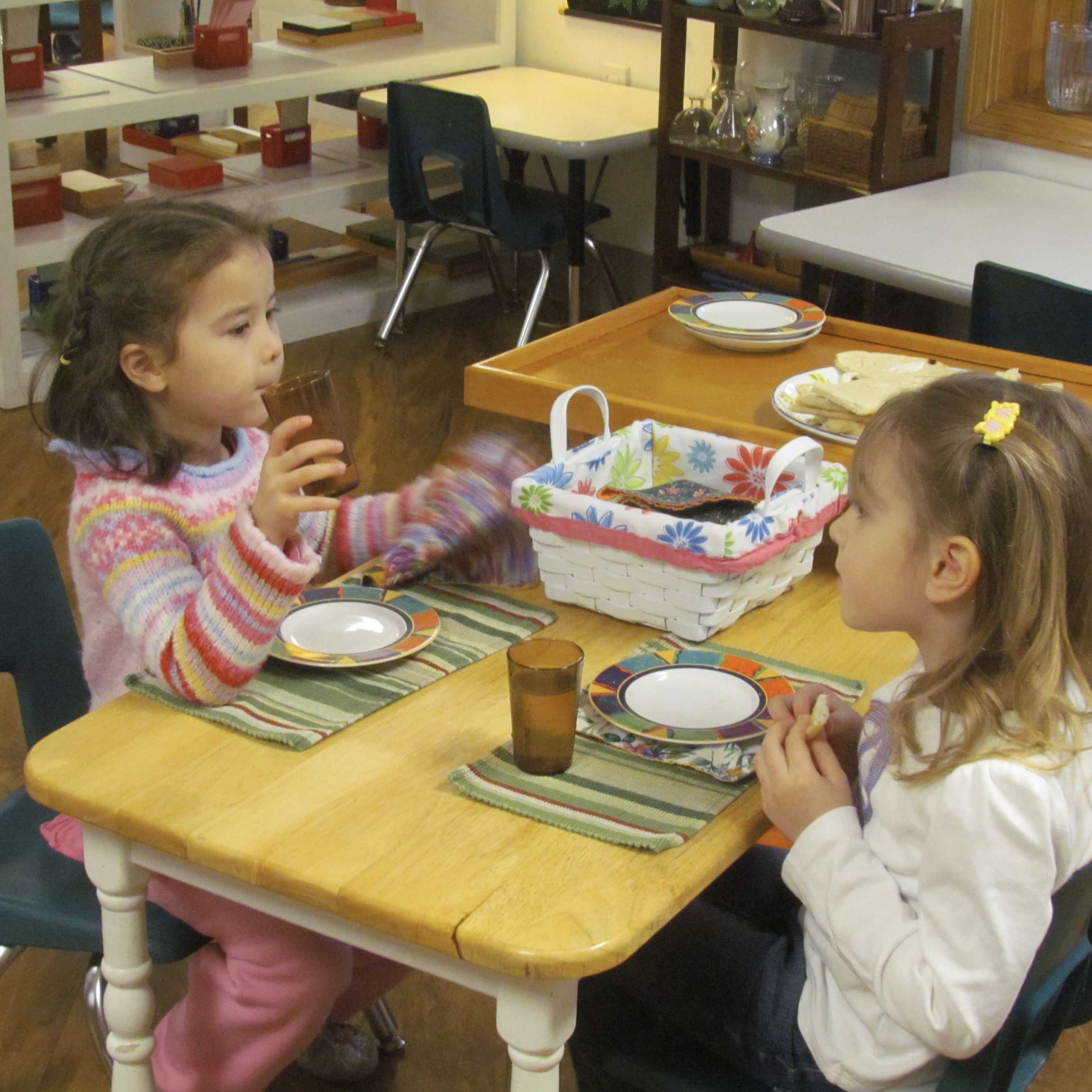By Maren Stark Schmidt
And They Call It Veggie Love…
When do we learn to love vegetables? For most of us, it is usually before the age of seven. During the first six years of life children are in a sensitive period of learning that involves refining the senses, which includes, of course, taste and smell.
Introduce new foods ten times. Presenting a variety of vegetables to the young child helps create a later preference for vegetables in the older child and adult. When introducing a new vegetable, we need to be patient. It takes about ten presentations of a dish for a child to learn to like it. When introducing a new vegetable, consider serving it two or three times a week for at least five weeks, in order for your child to gain an appreciation for the flavor. Remember, repetition and patience is needed when introducing new foods.
Be aware of food sensitivities.
We need to be aware that the reason our children may be reluctant to try new foods could be due to an allergy or sensitivity. My four-year-old sister refused to eat anything with tomatoes in it. Spaghetti with red sauce produced a ringed-tailed hissy fit. Come to find out years later, my sister is highly allergic to tomatoes, along with other foods she refused to eat as a child. Be tuned in to the fact that your child’s long-term refusal to eat a certain food may be the body’s way of saying, ”No, this really isn’t good for me.” Kids prefer crunchy vegetables.
Be careful not to overcook vegetables. Raw or lightly steamed are children’s favorite vegetable presentation. Youngsters love to dip veggies in dressings or sauces. Ranch dressing is a perennial favorite. Try homemade yogurt or tofu-based dips flavored with soy sauce, wasabi, peanut butter or avocado. Try olive oil and balsamic vinegar as a dipping sauce. Black bean dip or hummus are tasty with slices of cucumber or zucchini. Veggies wrapped up with dressing in a tortilla make a healthy burrito.
Be a good example.
If you want your children to eat more vegetables, set the standard by piling your plate high. Give your children some hands-on experiences. Plant a garden, shop at a farmers market, go to a u-pick farm and let the kids help in the kitchen. A child-selected and hand-shucked roasted ear of corn with melted butter from the farmers market is sure to create epicurean excitement.
Use fun or off-limits serving dishes.
Serve veggies or a salad as a first course in ice cream sundae or banana split dishes. Serve veggies with dip shrimp-cocktail style with ice in a long-stemmed glass. Have fun and be adventurous with your trips into veggieville.
Keep in mind this child-rearing paradox that applies to not just vegetables, but the most trying situations. When you think your children will never eat a vegetable again, suddenly that’s all they want to do.
Letting Children Learn From Their Mistakes
The summer I was six I longed to make cookies. The neighbor girl had an Easybake oven, and we made unsatisfying miniscule cakes from baby boxes. I yearned to cook real food from a recipe.
Dreaming of a fabulous from-scratch concoction I raided my mother’s kitchen. In our playhouse kitchen, peanut butter, honey and raw oats alchemized into unbaked clumps. My playmates and younger sisters dutifully ate the uncooked cookies, trusting their older, but not wiser, chef. Even today, my sisters are wary of any cookies I bring to the table. ”You made these?” they ask.
My mother took mercy on us all–on my sisters for being guileless guinea pigs; and on me for reading and sighing over the Betty Crocker cookbook.
Snickerdoodles. I wanted to make snickerdoodles. All by myself. I envisioned the smiling faces of my friends and family as we shared a warm cinnamon creation. Made by me. What a joyful moment it was when my mother finally said, ”Go. Go make snickerdoodles.”
Pulling the step stool to the counter I reached for the red-and-white-checked Betty Crocker cookbook, turning to the recipe’s memorized page number. I read. I measured. I stirred. I rolled balls of dough in cinnamon sugar and placed them on the cookie sheets, which my mother placed in the oven for me. The air filled with the aroma of success. I called my friends to come have a cookie. We sat on our patio and savored a midmorning snack.
After lunch I served the last of the batch of cookies. What had been warm and chewy were now cold, hard and more like a deer lick than a cookie.
“How much salt did you put in the cookies?” Mom asked. I reached into the drawer and pulled out the 1/4 measuring cup. All Mom said was, “I think you might want to read the recipe again.” 1/4 teaspoon is different than 1/4 cup? Oops.
My error taught me more about cooking than being told about my mistake or watching from the sidelines. My mother gave me the freedom to do something I really wanted to do. She didn’t try to control the process or the outcome. She let me experience my missteps as well as enjoy my success.
My mother understood that it is more important for children to do activities that that they are interested in, than to do things perfectly.
So what if you don’t know a measuring cup from a measuring spoon? You’ll learn.
Snickerdoodles
1 cup shortening
1 1/2 cups sugar
2 eggs
2 3/4 cups flour
Cinnamon sugar:
2 t cream of tartar
1 t baking soda
1/4 t salt
3 teaspoons sugar and
3 teaspoons cinnamon, mixed
Preheat oven to 400 degrees. Cream shortening and sugar. Blend in eggs. Stir in rest of ingredients (except cinnamon sugar) until well mixed. Roll into small balls, about the size of a walnut. Roll in cinnamon sugar. Place 2 inches apart on ungreased cookie sheet. Bake for 8 to 10 minutes at 400 degrees. Be careful not to overcook. Makes 4 to 5 dozen cookies.







